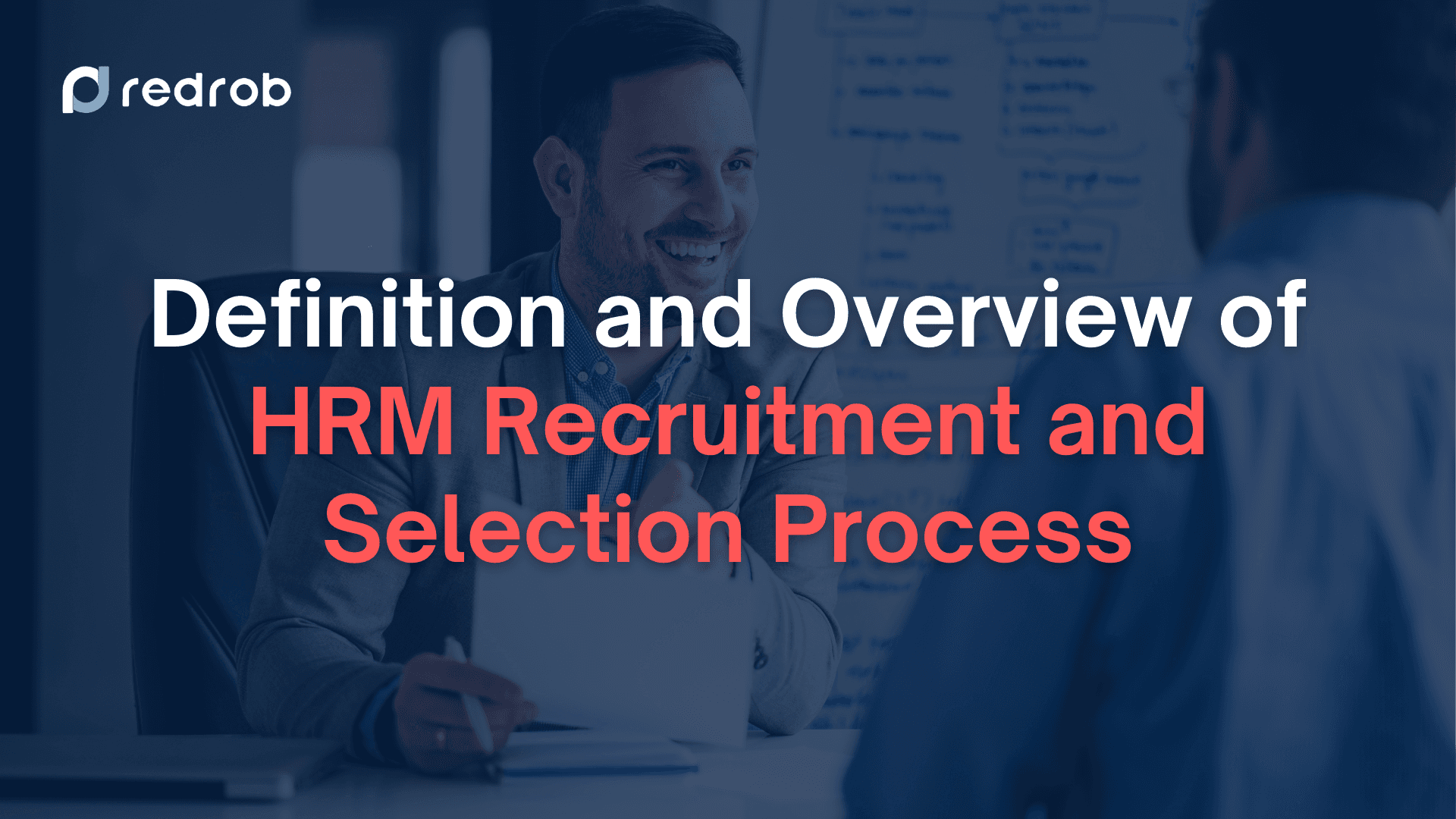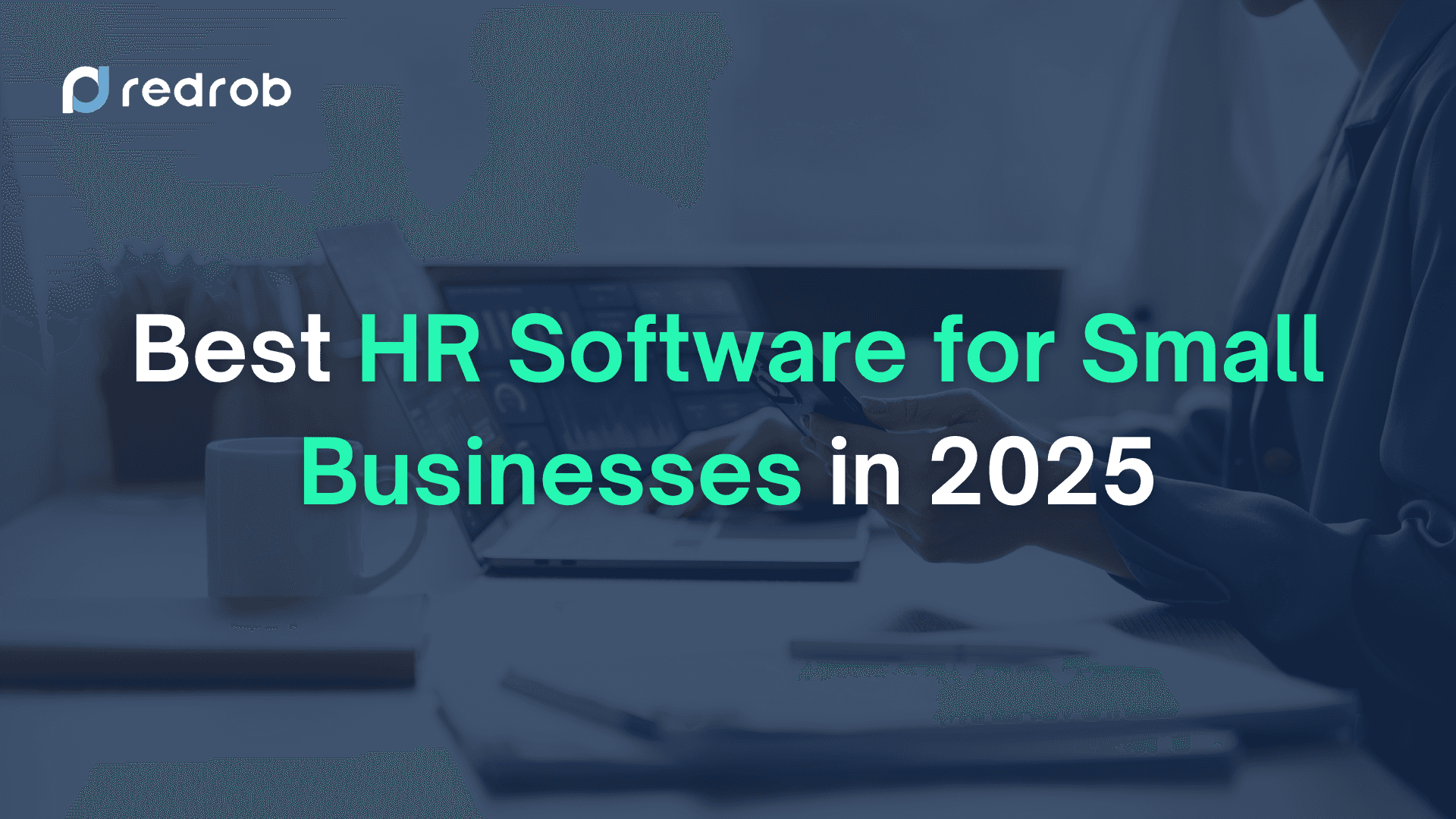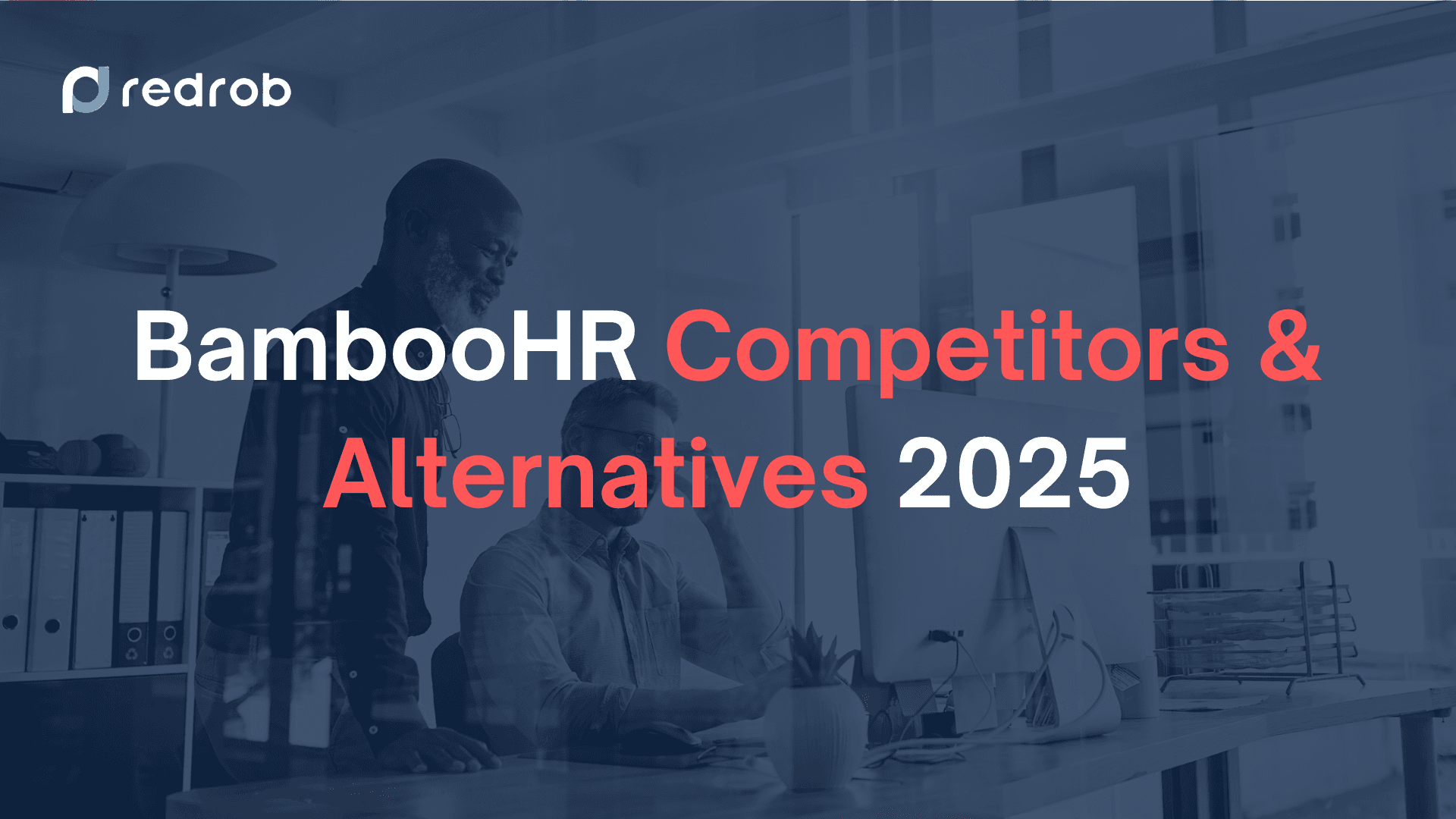Recruitment
8 mins read
•
Oct 18, 2024

Soumyata Singh
Recruitment and selection are the cornerstones of building a successful team. Attracting the right talent is only the first step. Selecting the best fit for your company’s culture and needs is just as crucial. But who said it’s going to be easy? However, an effective recruitment and selection process paves your way through the uncertainties.
This blog helps you define recruitment and selection process in HRM. You will explore how it works, its importance, and best practices for effective hiring. Keep reading to know how a strong HR strategy can set your organization up for long-term success.
Understanding Recruitment in HRM
Recruitment is the first crucial step in any HRM strategy. It involves finding and attracting candidates who fit open job roles. When we define recruitment and selection process in HRM, recruitment is highlighted as the foundation for building a strong workforce.
Recruitment serves a vital function in HRM by ensuring that your company finds the right talent. It helps to fill vacancies with qualified individuals who can contribute to your company’s success. Without a well-managed recruitment process, you risk hiring employees who may not fit the role or company culture, leading to high turnover rates.
Recruitment Goals: Identifying and Attracting Potential Candidates
The main goal of recruitment is to identify potential candidates who align with your job needs. By targeting skilled individuals, you increase the chances of successful hiring. Recruitment also aims to attract these candidates by showcasing your company as a desirable place to work. This can be done by highlighting benefits, career growth opportunities, and company culture. For example, a company needing a marketing manager would highlight its innovative projects and work flexibility to draw interest.
Recruitment Methods
Recruitment methods can be divided into two main categories: internal and external.
Internal Recruitment: It focuses on promoting or transferring current employees to new roles. It encourages employee retention and reduces recruitment costs. By offering growth opportunities within, you increase employee satisfaction.
External Recruitment: In external recruitment, you seek candidates from outside the organization. This method brings fresh perspectives and new skills. You might use job boards, career fairs, or recruitment agencies to attract outside talent.
Types of Recruitment Channels
You can use various recruitment channels to attract candidates. Choosing the right channel depends on the job role and target audience.
Job Boards: Platforms like Indeed and LinkedIn are common for posting job openings.
Employee Referrals: Encouraging current employees to refer candidates can bring in trusted individuals.
Company Website: Listing jobs on your own site attracts candidates already interested in your brand.
Social Media: You can reach a wide audience quickly through platforms like Twitter or Facebook.
These channels help ensure that your job openings reach the right audience.
Now let’s take a look at selection, moving ahead.
Understanding Selection in HRM

After recruiting candidates, the next step in HRM is the selection process. This step is crucial because it ensures that the right individuals are chosen from the pool of applicants. The selection process helps evaluate candidates to see who fits best with your company.
Selection in HRM focuses on identifying the best candidate from a group of applicants. While recruitment is about attracting talent, selection ensures that the best match is hired. It helps your company bring in employees who not only meet the skill requirements but also align with your organizational culture. By having an effective selection process, you ensure long-term success through better employee performance.
Selection Goals: Evaluating and Choosing the Right Candidates
The main goal of the selection process is to evaluate candidates effectively. You aim to determine who fits the job description and your company's culture. A strong selection process can minimize hiring mistakes. Choosing the right candidate means improving productivity, reducing turnover, and creating a positive work environment.
Selection Methods
There are several methods to assess candidates during the selection process:
Interviews: One-on-one or panel interviews help gauge a candidate’s communication skills, experience, and personality.
Tests: Aptitude and technical tests measure a candidate’s abilities relevant to the job.
Assessments: Behavioral assessments can provide insights into a candidate’s soft skills and how they might perform in real-world situations.
Combining these methods gives a more accurate picture of each applicant's potential.
Importance of Choosing the Ideal Candidate
Selecting the right candidate can significantly impact your company. Hiring the wrong one can be costly, both financially and in terms of productivity. According to CareerBuilder, 75% of employers admit hiring the wrong person at least once, costing them thousands of dollars. Choosing the right candidate leads to a better fit, higher performance, and stronger team cohesion. It also enhances overall company morale.
Only when you know a process completely, can you use it to achieve your hiring goals. In the next section let’s explore the recruitment process in detail.
Steps in the Recruitment Process
The recruitment process in HRM involves several structured steps. Each step ensures that the company attracts the best candidates for the job. When you define recruitment and selection process in HRM, it’s essential to consider how each stage impacts your overall hiring success. Let’s take a look at the steps involved.
1. Job Analysis and Designing Job Descriptions
The first step in recruitment is performing a job analysis. This helps you understand what the job requires in terms of skills, experience, and qualifications. Once you know this, you can design a clear job description. A well-written job description outlines the duties, expectations, and necessary qualifications. It serves as a guide for both recruiters and potential candidates. Well-defined job descriptions help increase applicant quality significantly.
2. Marketing and Advertising Vacancies
After defining the role, you need to market the vacancy. This involves advertising the job on multiple platforms. You can post on job boards, social media, or your company website. The goal is to reach a wide audience of qualified candidates. If you only use limited channels, you might miss out on great talent. For example, a Linked report revealed that 80% of professionals are open to new job opportunities but may not actively search. Advertising helps get their attention.
3. Sourcing and Receiving Applications
Next, you will begin receiving applications from candidates. You can actively source applicants through referrals or recruitment agencies. Sourcing allows you to reach passive candidates who may not apply on their own. Once applications come in, you must review them for initial eligibility. This ensures that only those meeting the basic requirements move forward.
4. Screening and Shortlisting Candidates
Screening involves reviewing resumes and conducting initial interviews to assess candidate suitability. You can also perform background checks and skills assessments during this stage. Shortlisting is narrowing down the candidate pool to those who meet the essential criteria. The goal is to identify a manageable number of applicants for the final selection process. Screening helps save time and resources by focusing on the most qualified individuals.
With the right recruitment steps in place, let us now move forward with the next stage: the selection process.

Steps in the Selection Process
Once you’ve gathered applications, the selection process begins. This stage is critical as it ensures that the right candidate is chosen. Let’s see how each step in the selection process plays a significant role in securing top talent when you define recruitment and selection process in HRM.
1. Conducting Initial and Subsequent Interviews
Interviews are one of the most common selection methods. You typically start with an initial interview to assess a candidate’s fit for the role. This is often followed by more detailed interviews with other team members or managers. The goal is to assess communication skills, problem-solving abilities, and whether the candidate aligns with your company’s values. A structured interview process can increase the likelihood of hiring the right candidate.
2. Assessing Candidates Using Tests and Background Checks
After interviews, you may need to assess the candidate’s specific skills through tests. This can include technical skills assessments, personality tests, or role-specific challenges. You can also run background checks to confirm education, previous work history, and legal standing. This stage ensures that the candidate is qualified and trustworthy. For example, a CareerBuilder survey found that 72% of employers use background checks to vet potential hires.
3. Evaluating Skills and Qualifications
Once tests and checks are complete, you evaluate the candidate’s skills and qualifications. Compare them against the job requirements to ensure they meet or exceed expectations. You want to focus on both hard and soft skills, as they are crucial to a candidate’s success. This step helps you determine if they can perform well and fit into your team culture.
4. Making Final Hiring Decisions
The last step is making the final hiring decision. This involves discussing the candidate with all interviewers and considering the results from the assessments. Once you agree on the best candidate, you can extend a job offer. Remember, the right decision can lead to long-term success and reduce turnover.
While you know the complete process well enough, next, let’s understand why it’s crucial for efficient hiring.
Importance of Effective Recruitment and Selection
A well-executed recruitment and selection process is crucial for building a strong workforce. When you define recruitment and selection process in HRM, you aim to improve overall organizational success. Let’s explore why this process is so vital for companies today.
1. Attracting the Best Talent for Organizational Success
Effective recruitment ensures you attract top talent. High-quality employees drive business success through innovation and performance. Companies with effective hiring practices see more revenue per employee. By refining your recruitment strategy, you increase the chances of hiring skilled candidates who help your company grow.
2. Reducing Turnover and Improving Retention
A strong selection process reduces turnover by finding candidates who are a good fit. When you hire the right people, they’re more likely to stay and perform well. The average cost of turnover is six to nine months of an employee's salary. Retaining employees means less time and money spent on re-hiring and retraining.
3. Cost Efficiency by Avoiding Wrong Hires
Making a wrong hire can be costly. It wastes time, money, and effort. By carefully defining recruitment and selection process in HRM, you can avoid these mistakes and ensure long-term savings.
4. Supporting Organizational Culture and Performance
Recruitment and selection processes also shape your organizational culture. Hiring candidates who align with your company values improves team cohesion. A good cultural fit boosts performance and morale. When employees feel they belong, they are more engaged and productive. This ultimately supports the long-term success of your organization.
Now you know the importance of an effective recruitment and selection process. However, there are several challenges that you may need to dodge along the way. Let’s get to them next.
Common Challenges and Best Practices
Recruitment and selection processes can be complex, presenting various challenges. When you define recruitment and selection process in HRM, understanding these hurdles is key. But with the right strategies, you can overcome them and make the process more efficient.
Common Challenges in Recruitment and Selection Processes
Recruitment comes with its share of challenges, including:
Attracting the right candidates: Sometimes, even with wide-reaching job ads, finding the perfect match is hard.
High competition: Competing with other companies for top talent can delay the process.
Bias in selection: Bias, whether conscious or unconscious, can skew hiring decisions.
Time-consuming process: Sorting through resumes and conducting multiple interviews takes considerable time and effort.
According to a source, 90% of the managers believe that it's difficult to find skilled candidates.
Best Practices for Unbiased and Effective Hiring
To hire effectively, you must adopt unbiased practices. Here are some tips:
Conduct structured interviews: This ensures each candidate is asked the same set of questions.
Implement diverse hiring panels: Different perspectives can help reduce bias.
Set clear criteria: Having pre-defined benchmarks ensures candidates are judged fairly based on qualifications.
Remember, companies with diverse hiring processes are more likely to be change-ready.
Utilizing Technology for Process Efficiency
Technology can simplify recruitment and selection. Tools like Applicant Tracking Systems (ATS) help automate resume screening, saving time. AI-powered platforms can analyze candidates’ skills and match them to job descriptions. Virtual interviews also cut down on scheduling issues. Recruiters believe AI will significantly improve hiring efficiency.
Continuous Process Improvement
Recruitment and selection should always evolve. Regularly reviewing and updating your processes can help you stay competitive. Gather feedback from hiring managers and candidates to identify areas for improvement. Use data to track performance and refine your approach over time. This ensures your recruitment strategy remains relevant in a constantly changing job market.
By addressing these challenges and applying best practices, you create a more streamlined hiring process. Now, let’s explore the future trends, changes and their impact on recruitment.
The Future of Recruitment and Selection in HRM
Recruitment and selection in HRM continue to evolve with new trends and changing demands. While you can now define recruitment and selection process in HRM, it's also crucial to consider what the future holds for hiring practices.
Emerging Trends and Technologies
Technology is rapidly changing recruitment. AI and machine learning help recruiters analyze candidate data faster and more accurately. Tools like chatbots handle initial queries, and virtual reality is now used for immersive job previews. This excellence and widespread use of AI tools was in fact, long predicted. Keeping up with these technologies will help you attract the best talent.
Adapting to Changing Workforce Demographics
Workforce demographics are shifting. The rise of remote work and an increase in Gen Z employees require a flexible approach. Younger generations value work-life balance and social responsibility. You’ll need to offer inclusive workplaces and flexible work arrangements to attract top talent. A Deloitte study shows that 75% of Gen Z workers want more remote work options. Recruitment strategies should adapt to these preferences.
Sustainability and Ethical Considerations
Sustainability is becoming a significant focus in recruitment. Candidates today prefer working for companies with clear ethical values. Emphasizing sustainability in your recruitment practices can help attract environmentally conscious applicants. Ethical recruitment also means being transparent, ensuring equal opportunities, and promoting diversity. A PwC survey revealed that 65% of employees consider a company's stance on sustainability when choosing where to work.
The Evolving Role of HR Professionals
The role of HR professionals is changing too. HR is no longer just about hiring and firing. HR teams are now strategic partners in shaping company culture, improving employee engagement, and driving business growth. As recruitment becomes more tech-driven, HR professionals must upskill to use data analytics and digital tools effectively. Many HR leaders believe people analytics will play a key role in HR’s future.
With these trends in, the future of recruitment and selection in HRM looks progressive.
Conclusion
We hope now you can define recruitment and selection process in HRM, and lay the foundation for building a strong workforce. It starts with attracting and identifying potential candidates and ends with selecting the best fit. Each step plays a critical role in ensuring organizational success.
Effective recruitment and selection drive organizational growth by bringing in top talent, reducing turnover, and improving performance. The right hires contribute to innovation and a positive work culture, which boosts business success.
Along the way, emerging technologies can help you bring about a lot of positive change to your hiring approaches. Redrob is one such platform that lets you embrace newer technologies and make the best of them to hire faster and efficiently.
What do you get with Redrob?
An excellent ATS for all-round control over hiring pipeline
Simplified job boards and AI-powered job posts
3500+ candidate assessment tests for better screening
Up to 88% less hiring costs and 92% faster hiring
Trust us for streamlined and efficient hiring? Start Your FREE Trial Now!



